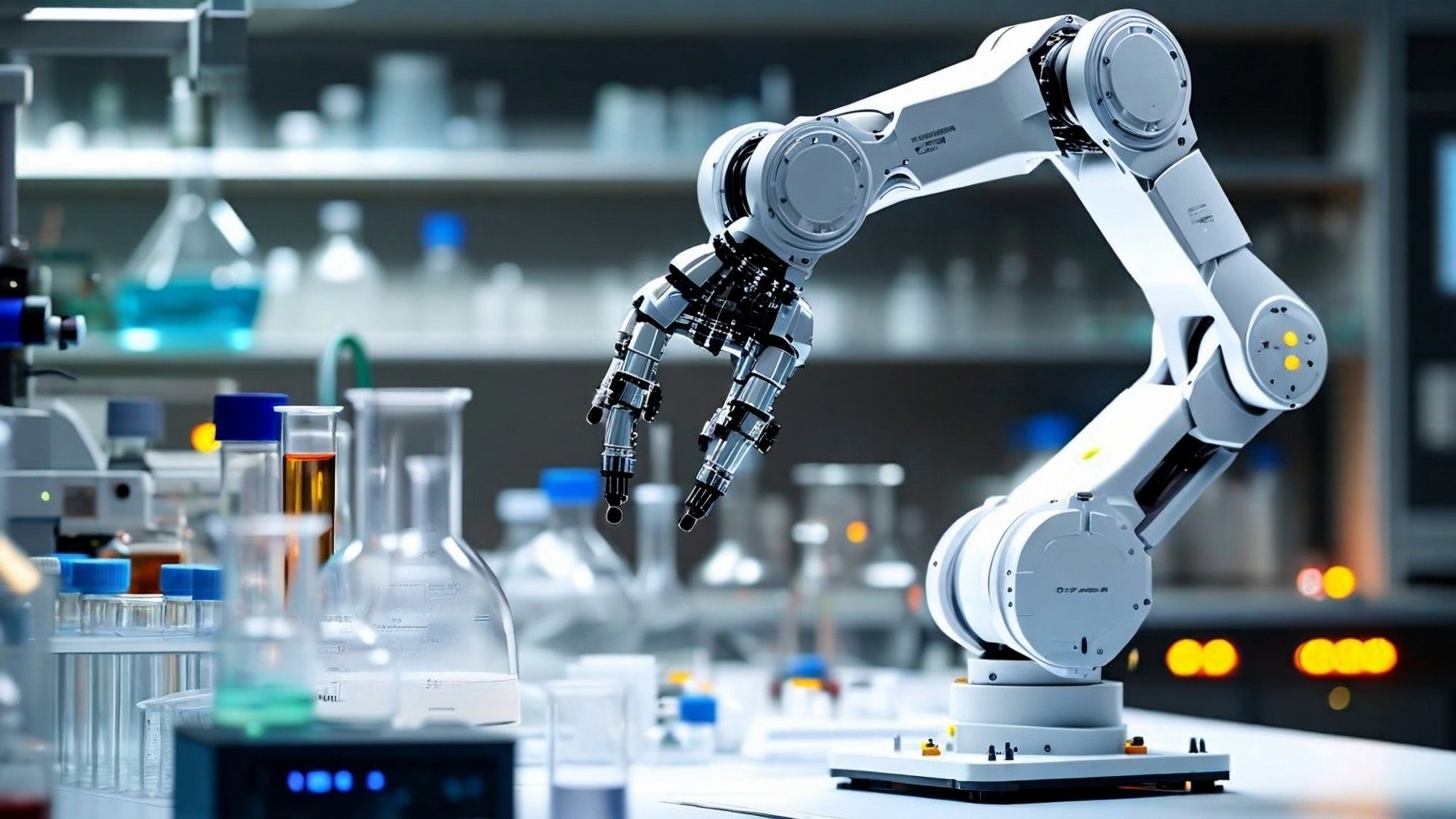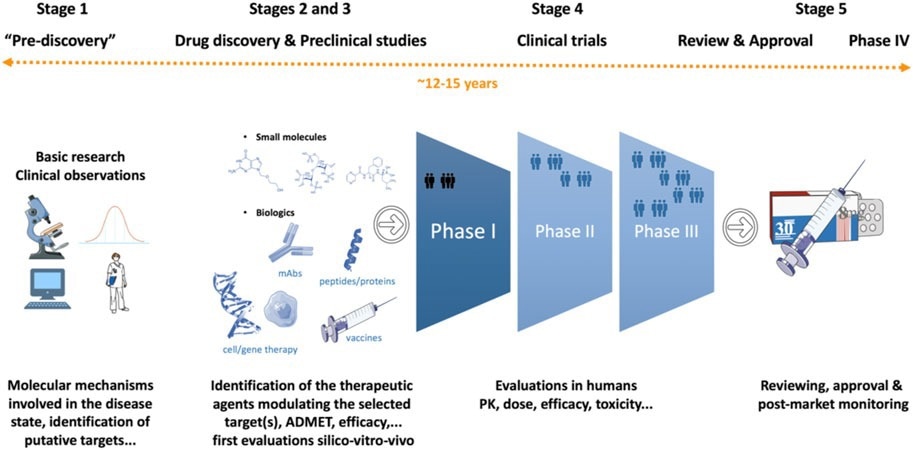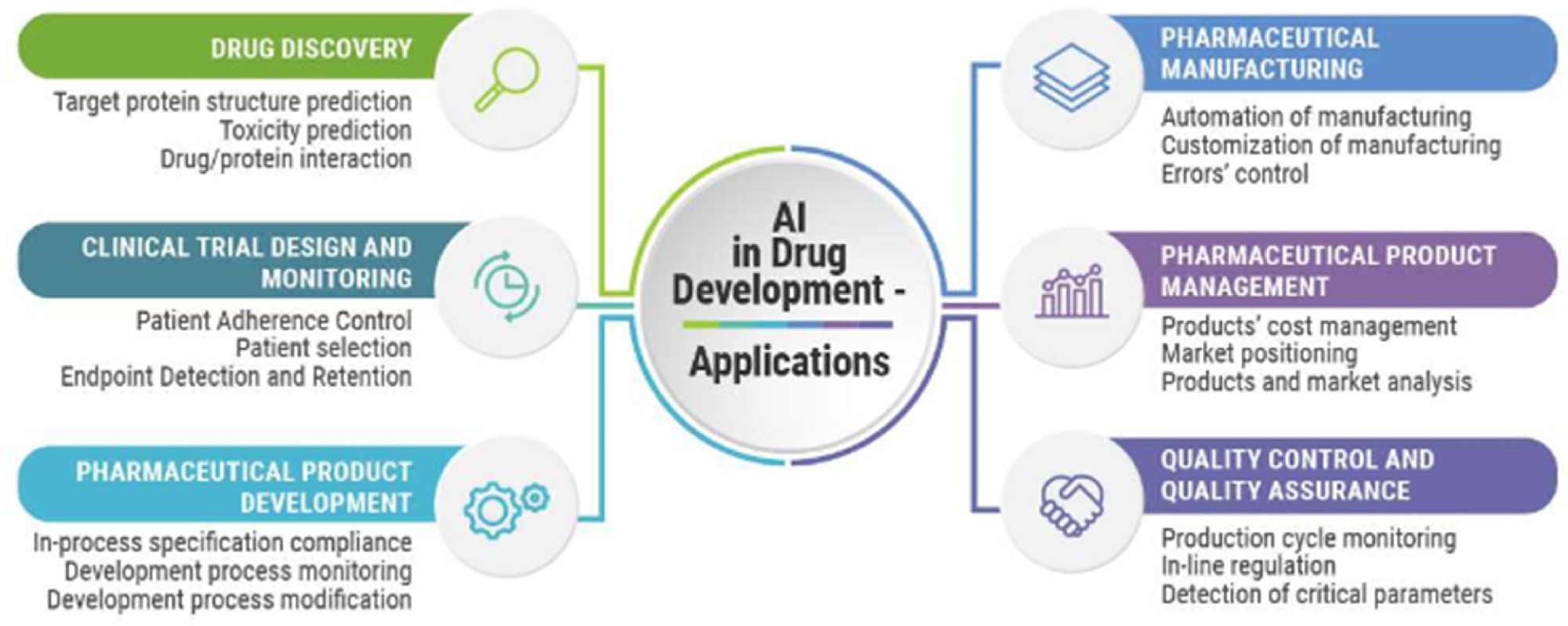Introduction
An Introduction to AI in Drug Discovery
The Drug Discovery Problem
Robotics in the Lab
The Role of AI
Challenges
The Future
Conclusion
References
Discover how AI and robotics are speeding up drug development, reducing failure rates, and ushering in a future where personalized medicines reach patients faster than ever before.
 Image Credit: Shutterstock AI Generator / Shutterstock.com
Image Credit: Shutterstock AI Generator / Shutterstock.com
Introduction
This article explores how artificial intelligence (AI) and robotics are revolutionizing drug discovery, cutting costs, accelerating timelines, and enabling rapid breakthroughs through automation and predictive modeling.
An Introduction to AI in Drug Discovery
Traditionally, developing a new drug takes many years and requires a massive financial investment, often involving significant risk and a high likelihood of failure. AI models trained on extensive data sets, sophisticated mathematical models, and advanced computational algorithms have been developed in an effort to directly address these inefficiencies.
Pharmaceutical companies worldwide are increasingly using AI to predict clinical trial outcomes, identify therapeutic targets, and optimize molecular designs. Technologies such as AlphaFold from DeepMind, which accurately predicts three-dimensional (3D) protein structures, and generative AI platforms that design medicinal molecules exemplify the transformative role of AI in drug discovery.
Although the United States Food and Drug Administration (FDA) has not yet approved an AI-generated drug for human use, several compounds developed through AI, such as treatments for fragile X syndrome and idiopathic pulmonary fibrosis, are currently being investigated in clinical trials.1
The Drug Discovery Problem
Drug discovery remains a challenging, costly, and time-intensive process. In fact, current estimates indicate that the approval of a single new drug typically costs about $2.8 billion USD and takes approximately 12 to 15 years.

Drug discovery and development. The main stages are represented in a highly simplified manner. The process varies depending on the molecular mechanisms expected to be linked to the disease and the type of therapeutic agents that needs to be developed. The approximate cost is around US $2.8 billion and the time needed to complete the entire process is around 12–15 years.2
The drug discovery process comprises multiple stages, beginning with basic research to identify therapeutic targets linked to specific diseases. Scientists then screen large numbers of potential compounds through computational methods, laboratory assays, and animal models. Despite rigorous preclinical testing, high failure rates persist, particularly during human clinical trials, where many drug candidates fail due to unforeseen toxicity or inefficacy.2
The coronavirus disease 2019 (COVID-19) pandemic highlighted the critical need for accelerated drug development, which required revolutionary technologies like AI to expedite target validation and compound screening. Nevertheless, advancements in this area have been limited due to the lack of complete data, combined with biological complexity and stringent regulatory requirements, all of which emphasize the urgent need for more efficient and innovative solutions to enhance the speed, affordability, and success rate of drug discovery processes.2
Robotics in the Lab
Robotics has transformed laboratory practices, particularly in drug discovery, by utilizing automated platforms for tasks such as liquid handling and high-throughput screening (HTS). Advanced robotic systems enable precise and rapid screening of vast compound libraries, significantly enhancing efficiency, consistency, and scalability.
At the U.S. National Institutes of Health (NIH) Chemical Genomics Center, robotic automation facilitates quantitative HTS (qHTS), where multiple compound concentrations are simultaneously tested to generate comprehensive concentration-response data. This robotic system incorporates precise liquid dispensers, multifunctional robotic arms, and sophisticated software capable of handling complex assay workflows, thereby reducing manual intervention, reagent consumption, and human error.3,4
Several companies and institutions exemplify this automation trend. Insilico Medicine, for example, combines robotics with AI to expedite compound identification and drug development, whereas Evotec employs robotic platforms for efficient large-scale biochemical screening. Emerging lab automation startups are further advancing robotic technologies by integrating microfabrication and adaptive handling mechanisms to enhance system speed and reliability.3,4
Robotic systems are associated with numerous advantages, including increased throughput, reproducibility, and operational consistency. For example, robotic systems at the NIH have generated millions of concentration-response curves from various assays, which improves the reliability of screening data for chemical probe identification. These platforms are also designed to accommodate diverse assay formats, including cell-based, biochemical, and complex multi-step procedures.3,4
The Role of AI
AlphaFold accelerates target identification by accurately predicting protein structure from amino acid sequences. Likewise, BenevolentAI integrates machine learning (ML) algorithms to discover new drug targets and rapidly progress them into clinical trials. Atomwise employs neural networks to perform virtual screening to identify molecules with high binding affinity to targets.5,6
 A flow chart of the role of AI in drug development3
A flow chart of the role of AI in drug development3
Combining AI with robotics creates closed-loop discovery systems that automate and optimize drug discovery cycles. These platforms perform iterative tasks, including hypothesis generation, automated experimentation, analysis, and refinement, which collectively increase research speed, scale, and consistency.5,6
Techniques like graph neural networks and reinforcement learning further enhance molecule generation and optimization. Ultimately, AI-driven drug discovery promises improved efficiency and personalized treatments tailored to individual patient needs, accelerating the translation of novel therapies from laboratories into clinical practice.5,6
How AI is accelerating drug discovery - Nature's Building Blocks | BBC StoryWorks
Challenges
Complex neural networks, which are often described as "black boxes," are difficult to validate, which creates uncertainty around their predictions. Addressing these concerns requires the simplification of AI architectures by removing redundant neural network layers without losing accuracy, thereby increasing the transparency and trustworthiness of AI models.5,6
Another ethical concern regarding AI and machine learning (ML) is data bias, which can lead to inaccurate outcomes, especially when algorithms are trained on non-representative or incomplete datasets. This bias has the potential to reinforce health disparities, rather than reduce them.
Regulatory agencies like the United States FDA and European Medicines Agency (EMA) are adapting their frameworks to remain aligned with these rapidly advancing technologies. Nevertheless, recently proposed legislation struggles to address AI's dynamic and self-learning nature, especially in generative models that continuously produce new data.
Ethical questions are also becoming increasingly prominent, including who is responsible when an AI-driven medical error occurs. There is also growing concern over data privacy, algorithmic fairness, and long-term societal impact.7
Flexible yet rigorous regulations, global cooperation, and clear ethical guidelines are essential to ensure the safe, effective, and equitable deployment of AI-ML in healthcare.
The Future
The pharmaceutical landscape is witnessing a surge in collaborations between technology firms and pharmaceutical companies. These partnerships are fostering innovation through advanced data analytics, automation, and computational modeling. The startup ecosystem is also increasingly contributing fresh perspectives and agile development models.
To thrive in this evolving field, expertise in data science, automation operations, and AI-based modeling is becoming essential. As AI tools are embedded in research workflows, the future promises more efficient, precise, and patient-specific drug development.8
Conclusions
AI and robotics are not replacing scientists; rather, these technologies are empowering researchers to work faster and more efficiently. Together, humans and machines form a hybrid model that is redefining drug discovery.
Whereas scientists bring creativity, clinical insight, and ethical oversight, AI accelerates data analysis, and robotics automates repetitive lab work. This collaboration shortens timelines, reduces costs, and increases precision.
As these technologies continue to evolve, the future of pharmaceutical research will be shaped by a synergy between human intelligence and ML. Ultimately, this hybrid approach promises faster, more personalized, and accessible therapies for patients worldwide.
References
- Niazi, S. K., & Mariam, Z. (2025). Artificial intelligence in drug development: reshaping the therapeutic landscape. Therapeutic Advances in Drug Safety, 16, 20420986251321704. DOI: 10.1177/20420986251321704, https://journals.sagepub.com/doi/10.1177/20420986251321704
- Singh, N., Vayer, P., Tanwar, S., Poyet, J. L., Tsaioun, K., & Villoutreix, B. O. (2023). Drug discovery and development: introduction to the general public and patient groups. Frontiers in Drug Discovery, 3, 1201419. DOI: 10.3389/fddsv.2023.1201419, https://www.frontiersin.org/journals/drug-discovery/articles/10.3389/fddsv.2023.1201419/full
- Oyejide, A. J., Adekunle, Y. A., Abodunrin, O. D., & Atoyebi, E. O. (2025). Artificial intelligence, computational tools and robotics for drug discovery, development, and delivery. Intelligent Pharmacy. DOI: 10.1016/j.ipha.2025.01.001, https://www.sciencedirect.com/science/article/pii/S2949866X25000097
- Michael, S., Auld, D., Klumpp, C., Jadhav, A., Zheng, W., Thorne, N., Austin, C.P., Inglese, J. and Simeonov, A. (2008). A robotic platform for quantitative high-throughput screening. Assay and drug development technologies, 6(5), 637-657. DOI: 10.1089/adt.2008.150, https://www.liebertpub.com/doi/10.1089/adt.2008.150
- Qureshi, R., Irfan, M., Gondal, T.M., Khan, S., Wu, J., Hadi, M.U., Heymach, J., Le, X., Yan, H. and Alam, T. (2023). AI in drug discovery and its clinical relevance. Heliyon, 9(7). DOI: 10.1016/j.heliyon.2023.e17575, https://www.sciencedirect.com/science/article/pii/S2405844023047837
- Schöning, J., & Pfisterer, H. J. (2023). Safe and trustful AI for closed-loop control systems. Electronics, 12(16), 3489. DOI: 10.3390/electronics12163489, https://www.mdpi.com/2079-9292/12/16/3489
- Pantanowitz, L., Hanna, M., Pantanowitz, J., Lennerz, J., Henricks, W.H., Shen, P., Quinn, B., Bennet, S. and Rashidi, H.H.(2024). Regulatory aspects of AI-ML. Modern Pathology, 100609. DOI: 10.1016/j.modpat.2024.100609, https://www.sciencedirect.com/science/article/pii/S0893395224001893
- Singh, S., Gupta, H., Sharma, P., & Sahi, S. (2024). Advances in Artificial Intelligence (AI)-assisted approaches in drug screening. Artificial Intelligence Chemistry, 2(1), 100039. DOI: 10.1016/j.aichem.2023.100039, https://www.sciencedirect.com/science/article/pii/S2949747723000398
Last Updated: May 22, 2025